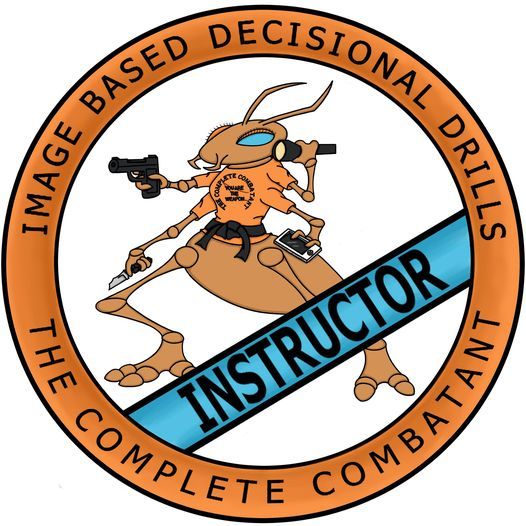Course Description:
Our Image Based Decisional Drills “THE CLASS” stems from our dry practice or live practice Image Based Decisional Drills learning system. This is a well thought out KIT with a deck of 21 Image Cards that provide IMAGES that will help you to recognize danger and to make smart decisions ahead of time. Our image based learning system is another beneficial step on your way to making good decisions quickly.
Who Should Take this Course:
- Anyone 13 and older
- No experience? COME! A lot of experience? COME!
- Under the age of 18: Must be accompanied by an adult and able to follow the coaches’ instructions. NONE of their scenarios will involve a “lethal” decision or the use of a SIRT training pistol.
Learn More
Benefits
- “Visual cueing, pre-need decision making, tool cycling, distance management, and strategy changes that can be practiced on the range.
- Pressure testing under realistic time constraints with feedback for improvement.
- IBDD can be beneficial ON or OFF the range. The actual mechanics of shooting can be practiced separately while the IBDD drills will help with tool handling and selection, therefore a BLUEGUN, plastic trainer, or SIRT Training Pistol is a suitable substitute.
- When you work in a group you not only get the experience your own scenario but you get to mentally work through theirs as well
- We use SIRTs (training pistol with LASER for immediate feedback)
- All levels of experience are welcome. The benefits are the same for everybody. The more experience you have, the more “tools” can be introduced. If you have training in additional areas of self protection like jacks, saps, movement, edged weapons, etc. then add these to your scenario. Also, your cognitive stacking may be quicker and easier so challenge yourself!
- This NOT a combatives class or close quarter class
- NO LIVE OC/PEPPER SPRAY EXPOSURE.”
What Is Provided
“We supply everything you will need to participate in our non-live fire Image Based Decisional Drills “THE CLASS”
- Dozens of different IBDD Image Cards
- 8 OPTION Cards (+the rare 9th option: Force on Force where skills and training requirements MUST be met in order to “use” this card)
- Inert Pepper Spray = TRAINING UNIT
- Eye protection (if applicable)
- Flashlight
- Prop Phone
- Simple Steps to Apply a Tourniquet
- IBDD Decision Options Sheet
- SIRT Training Pistol”
What To Bring
- “An open mind
- Bring “note taking” abilities”
– Brian and Shelly Hill, The Complete Combatant | Learn More >
Course Info
Cost
$79.95
Course Length
This is an 8-hour course
Lesson Topics
Lesson 1 – Measure your decisional process right off the bat with images on the screen and a 10 second timer. FUN WAY TO GET YOUR GEARS TURNING
Lesson 2 – Go over the 8 most common “decisions” and the importance of the less popular “9th” option
Lesson 3 –Each option is discussed in detail. We will visits the of pros and cons, why proxemics are so important, distance relative decisions, capability, tool cycling, learning to “see more”, recognizing changes in your environment, pre assault cues, and so much more
Lesson 4 – Use our custom and unique IBDD OPTION CARDS to help you make decisions quickly, plus learn a few techniques to add to your “tool box”
Lesson 5 – Are you a good witness? What is your moral compass? Do you have altered perceptions? What is your arousal level and at what point can you work through the adrenaline rush and confusion?
Lesson 6 – Crawl, walk, run and then sprint with quick cognitive stacking of decisions and tool cycling


